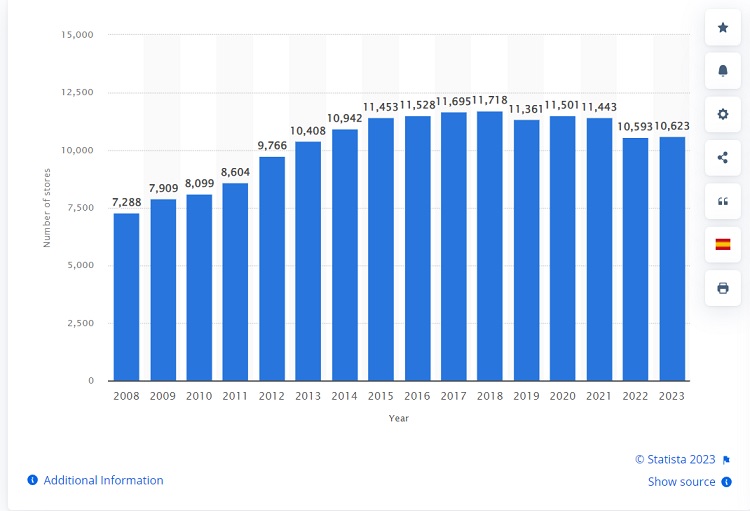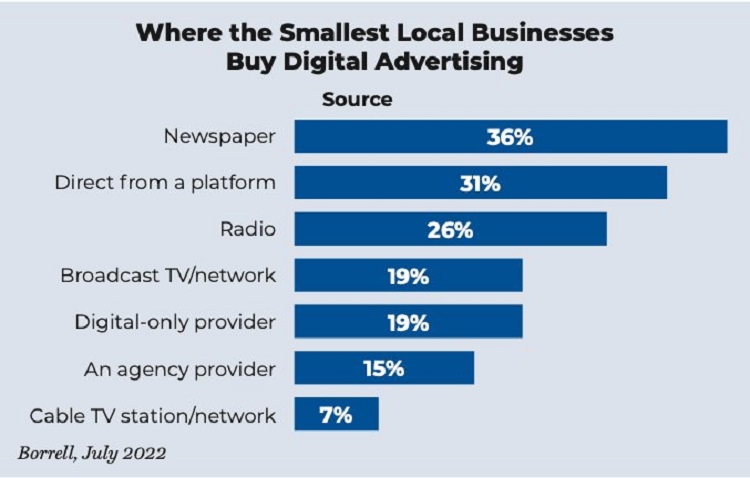Entrepreneurs dream of reaching as many customers as Costco or Walmart does. However, finding the magic formula that takes a brand from a small local business to a huge big box store takes work.
However, striving toward having a location in every major city is an excellent use of resources and time. To understand how companies might expand their business the way Costco and Walmart did, study the progression path and implement similar strategies.
1. Adopt a 10-Foot Rule

Source: https://www.statista.com/statistics/256172/total-number-of-walmart-stores-worldwide
According to Statista, Walmart operates around 10,623 stores and clubs across 20 countries. They also have a strong e-commerce presence. Something they are likely doing that keeps customers coming back is a policy founder Sam Walton implemented in the early days of the company’s existence — a 10-foot rule.
If a customer comes within 10 feet of an employee, the worker should greet them with a smile and try to help them. What is your policy? Adopting a consumer-first approach makes you stand out from the competition.
2. Demand Quality From Suppliers
If you have sent products to Costco or purchased from them, you know their items are pristine. One of the reasons for such high-quality goods is their packaging requirements for third-party suppliers.
They have a list of requirements to ensure items arrive shelf ready and are presentable to club members. Pallet jacks and forklifts often move them around, so they must endure compression from all sides.
3. Fix Your Reputation

Source: https://www.marketingcharts.com/brand-related/top-brands-229802
In a list of companies with the best and worst reputations, Costco ranked number two in the United States. The survey asked about seven areas:
- Trust
- Vision
- Growth
- Product & Services
- Culture
- Ethics
- Citizenship
How well does your brand perform in the areas above? Consider whether your customers trust you and fix any problems in each category. Once your company hits all the high notes, add some programs to help your local community.
4. Get Personal
Around 80% of consumers prefer to buy from a brand that creates a personal connection with them. Walmart does a slightly better job of this than Costco, but Costco offers better prices on some items. If you go on Walmart’s app or website, you are greeted by name and offered suggestions based on past buying and browsing behavior.
Get to know your customers. Develop buyer personas for them so you know their pain points and the solutions they seek. With a bit of detective work, they will seem like old friends, and you will understand exactly what they want and how to develop an excellent customer experience.
5. Start Local

Editor and Publisher did a deep dive into local ad spending for small businesses and found 36% still utilize local newspapers and 31% digital platforms. Walmart and Costco did not just grow into the powerhouses they are overnight — they started small and began to branch out over time.
Perfect your marketing game in your local market and then stretch into other areas. Whether you plan to have multiple locations, or you want a single headquarters and a massive online presence, it starts with the community around you.
Tap into the power of word-of-mouth marketing. Ask your loyal fans to tell their friends and family about what you sell, and why others should buy from you. Set up a referral program. Look at what elements created success for Walmart and Costco but also be open to trying other things. Your business model is unique, so you must find what works best for you.
6. Recruit the Right People
Most of the time, when you enter Walmart or Costco, a happy employee greets you. People know their tasks and zip around completing them. Both companies pay decent wages for the type of work and promote from within.
When hiring new employees, look for those with a growth mindset. You can teach skills, but changing attitudes is challenging. If you hire people who appreciate the job and want to do their best, you can send them for education, train them in your ways, and wind up with a loyal and excellent lifelong employee.
Part of reducing staff turnover is treating them as well as another company would. Offer raises for their continuing employment, give them perks they cannot get anywhere else, and praise them with words and rewards. Treat your workers like family and they are more likely to stick with you, reducing churn and giving your brand a chance to gain from years of experience.
7. Do Your Research
In the 1960s, Sam Walton ran a chain of fairly successful small stores in towns. However, he thought he could do better. Walton began visiting other retailers around where he lived, observing everything from how their employees interacted with customers to prices and inventory levels.
He quickly realized discounting was the wave of the future. Walton could either stick with his current model — which would likely go under when the discount stores grew — or open a similar store and see what happened.
Do your research by hitting the pavement and visiting competitor locations in your industry. Take notes on what they seem to do well and look for patterns. Finding an opportunity for growth and tagging onto upcoming trends will help your company grow beyond your wildest dreams.
Do You Want to Become as Big as Costco or Walmart?
The idea of growing a big box store may seem appealing. With such success comes a lot of responsibility and potential for failure. Take time to talk to your top employees and stakeholders about your plans. Without a strong team behind you, making it to the same level is nearly impossible.
If you want to grow your business to higher levels, implement the changes listed above. Pay attention to industry trends and adapt them. Never stop changing, growing and striving to be the top-recognized name in your industry.
About the Author: Eleanor Hecks is editor-in-chief at Designerly Magazine. She was the creative director at a digital marketing agency before becoming a full-time freelance designer. Eleanor lives in Philadelphia with her husband and pup, Bear.
